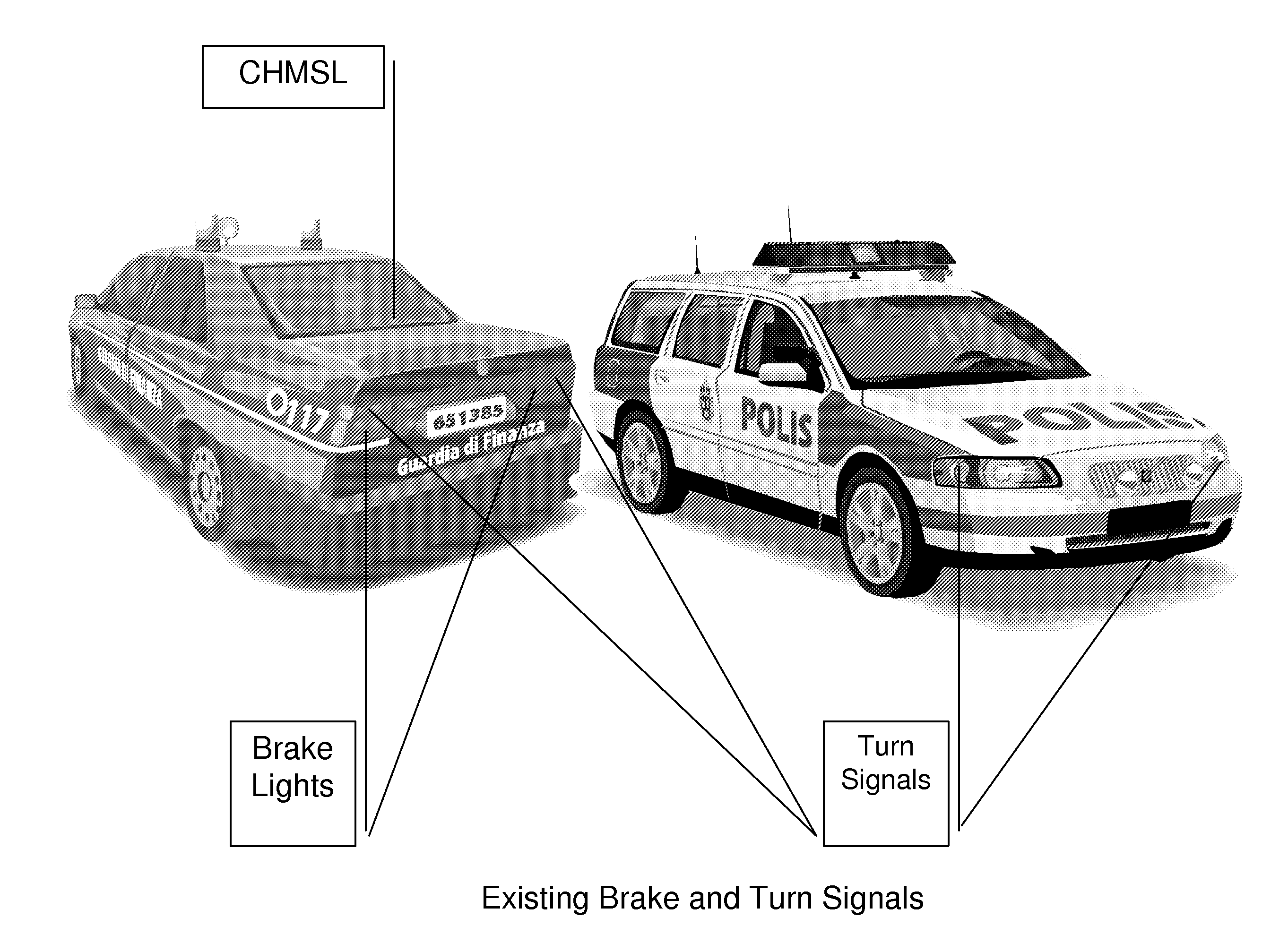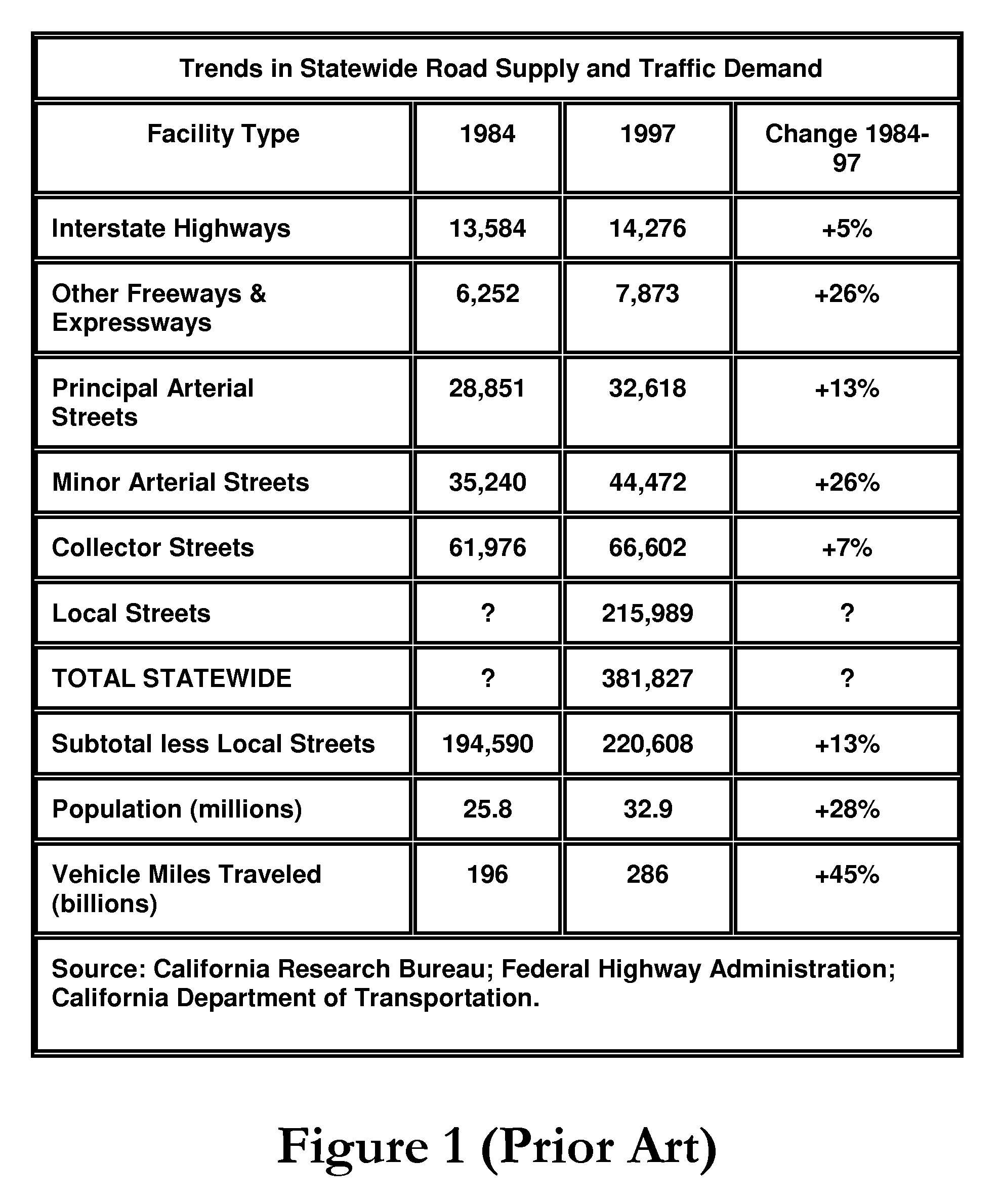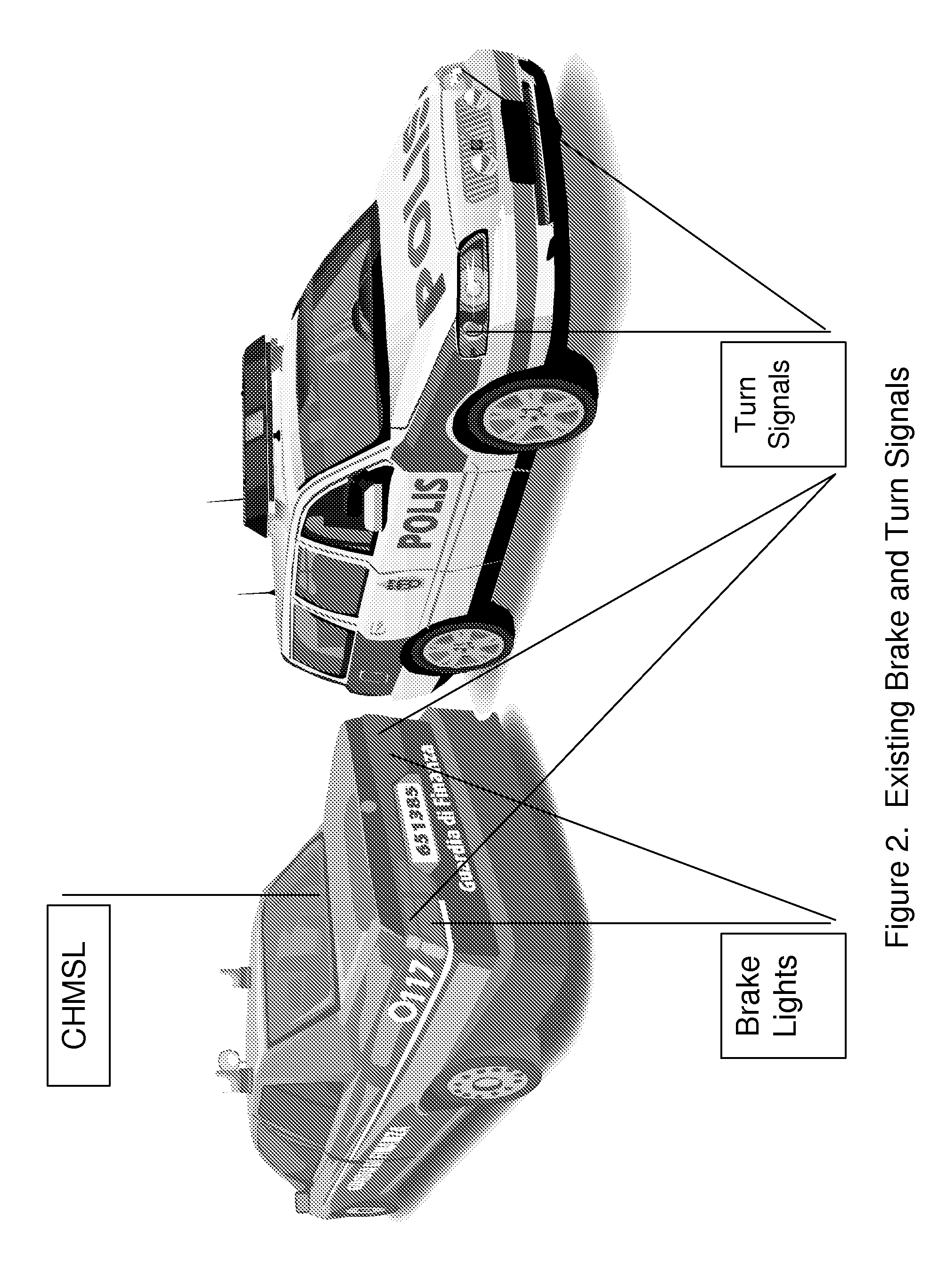Method and apparatus to determine vehicle intent
a vehicle intent and vehicle technology, applied in the direction of instruments, vehicle components, signalling/lighting devices, etc., can solve the problems of not being able to meet the needs of all vehicles, the full scale implementation is institutional and not technical, and the aircraft faces the same capacity problem, so as to improve the efficiencies of roads, reduce congestion, and increase situational awareness
- Summary
- Abstract
- Description
- Claims
- Application Information
AI Technical Summary
Benefits of technology
Problems solved by technology
Method used
Image
Examples
Embodiment Construction
[0037]Referring to FIG. 3, in the first embodiment of the present invention, a system is shown for displaying driver intent using various light or lamp signals on the vehicle. This embodiment is a fully integrated system, which interfaces with various other existing vehicle systems. The inputs to the system include sensor inputs 110 which may include Radar, Lidar, or other vehicle sensors (speed, turn angle, acceleration / deceleration, braking, and the like), as well as the vehicle's location 120 which may be derived from satellite navigation, inertial reference or other means. The vehicle may then estimate the potential routes 200 to be taken by the driver based on a combination of route history previously taken 130, time of day and date 140, and actual route guidance 150. For example, the potential route estimator 200 may have a high degree of confidence in routes taken during the week at certain times pre-established times such as driving a child from home to school or a work comm...
PUM
 Login to View More
Login to View More Abstract
Description
Claims
Application Information
 Login to View More
Login to View More - R&D
- Intellectual Property
- Life Sciences
- Materials
- Tech Scout
- Unparalleled Data Quality
- Higher Quality Content
- 60% Fewer Hallucinations
Browse by: Latest US Patents, China's latest patents, Technical Efficacy Thesaurus, Application Domain, Technology Topic, Popular Technical Reports.
© 2025 PatSnap. All rights reserved.Legal|Privacy policy|Modern Slavery Act Transparency Statement|Sitemap|About US| Contact US: help@patsnap.com



